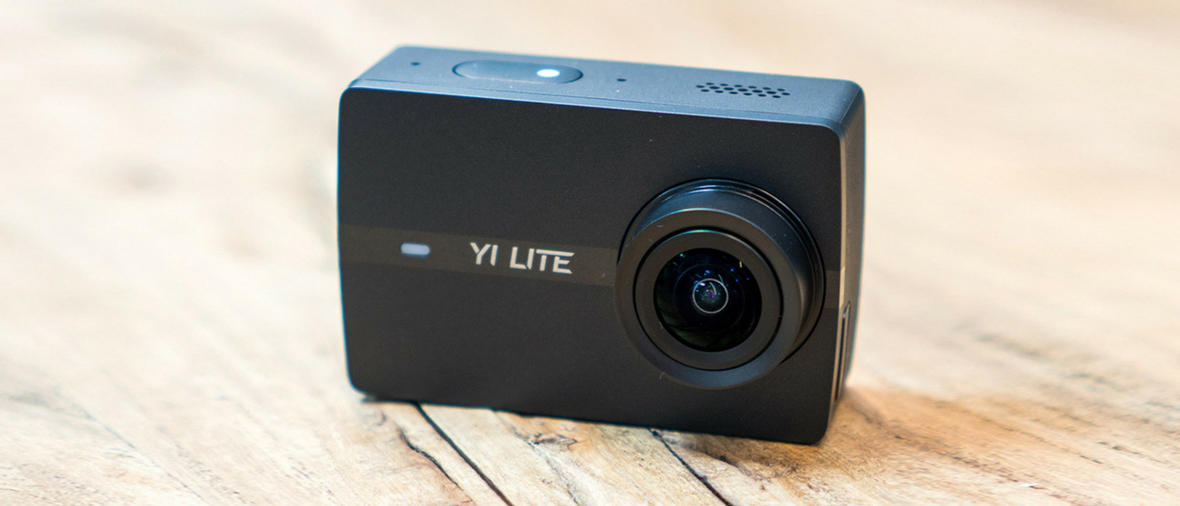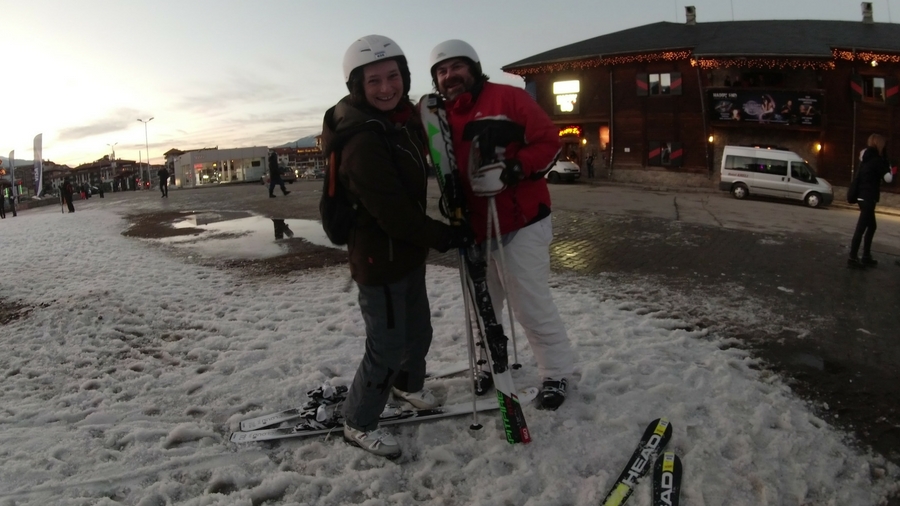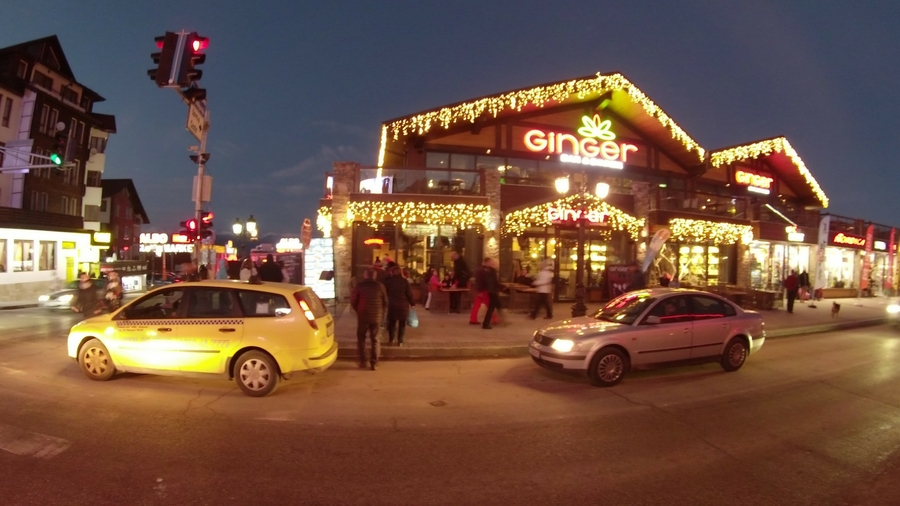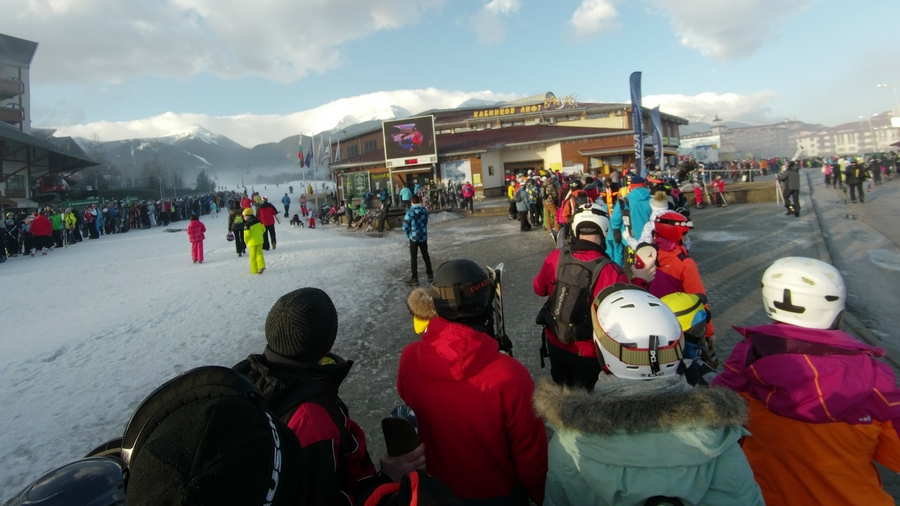TechRadar Verdict
Although it does offer a 4K 20 frames per second (fps) mode, that's only good for still video. When the action starts, this tiny pocket-sized shooter excels with Full HD 50/60fps video. With easy to use touchscreen navigation, a decent app and all the essential features most occasional users want, the tough, reliable and affordable Yi Lite proves an impressive entry-level action camera.
Pros
- +
Very smooth Full HD 50/60fps video
- +
So simple to use
- +
4K 15/20fps option
- +
Two hours battery life
Cons
- -
4K 15/20fps is jerky
- -
No 4K image stabilisation
- -
Lacks GPS & other sensors
- -
No voice control
Why you can trust TechRadar
Action camera marketeers are obsessed with resolution. Just as more and more megapixels characterise the explosion of digital cameras 10 years ago, 4K has become the must have feature in action cameras. However, there's a lot more to good, watchable video footage of outdoor activities than merely 3840x2160 pixels. A lack of GPS and data gathering sensors aside, the Yi 4K+ we reviewed recently is in a very many ways just as good as any GoPro. Although the market leader is not the target of this cut-price action camera, the Yi Lite – which sells for just $99.99 / £99.99 / AUS$178 – proves perfect for anyone wanting to explore the world of action cameras without spending a fortune.
Features
- 4K video capture up to 20fps
- Comes with a waterproof case
- 16MP still images
The Yi Lite has no GPS, it's not going to measure your speed, and you can't bark instructions at it and hope it understands. This is not a full-featured bells-and-whistles action camera like the GoPro Hero6 Black. However, if you're after an action camera to use just occasionally, this sensibly-priced product has all of the core features you're going to need, and a few creative options, too.
Technically, the Yi Lite is capable of filming video in 4K resolution, though it tops-out at a paltry 15/20 frames per second (15fps for NTSC, 20fps for PAL). That's likely going to make for a jumpy, blurry video, and more so because the camera's basic image stabilisation only works with sub-4K resolutions. No matter, because it's able to film video in 1080p and 720p with various higher frame rates and that image stabilisation, adding creative features like slow-motion and time-lapse. It also loop records, constantly recording over footage in a cache for a specific time period, so you don't miss that tumble on the slopes. It takes 16MP stills, too, and again has a few useful features such as burst, time-lapse (even while a video is recording) and a timer mode for group shots.
On the front is a 150° wide-angle – virtually fish-eye – lens with an fixed aperture of f/2.8, that works with a Sony Exmoor R IMX206 image sensor. The package also comes with a waterproof housing good for 40m/130ft. My review sample also came with a head mount, which I was easily able to securely attach to a ski helmet.
Used in conjunction with a the Yi Action app, the Yi Lite produces its own WiFi network on the 2.4GHz & 5GHz bands. It is possible to transfer the footage from the microSD card inside the camera to your smart phone, though any 4K video footage is downgraded to full HD footage. After all, we don't yet live in the age of 4K smartphones. That app can upload to Facebook, Twitter and YouTube. That app also hosts a feed of the Yi Lite's live view, and can be used to tweak the settings, and control it remotely.
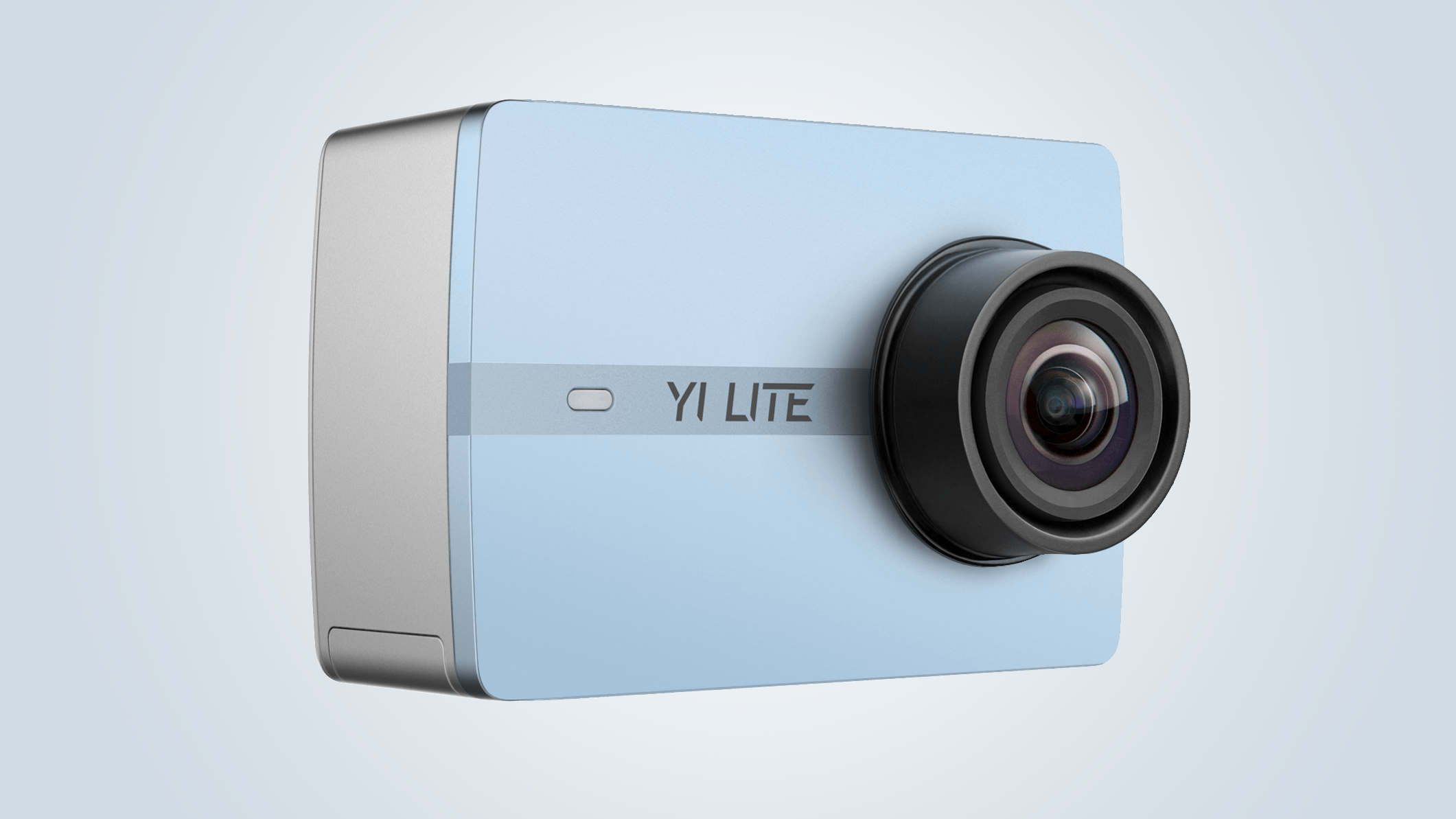

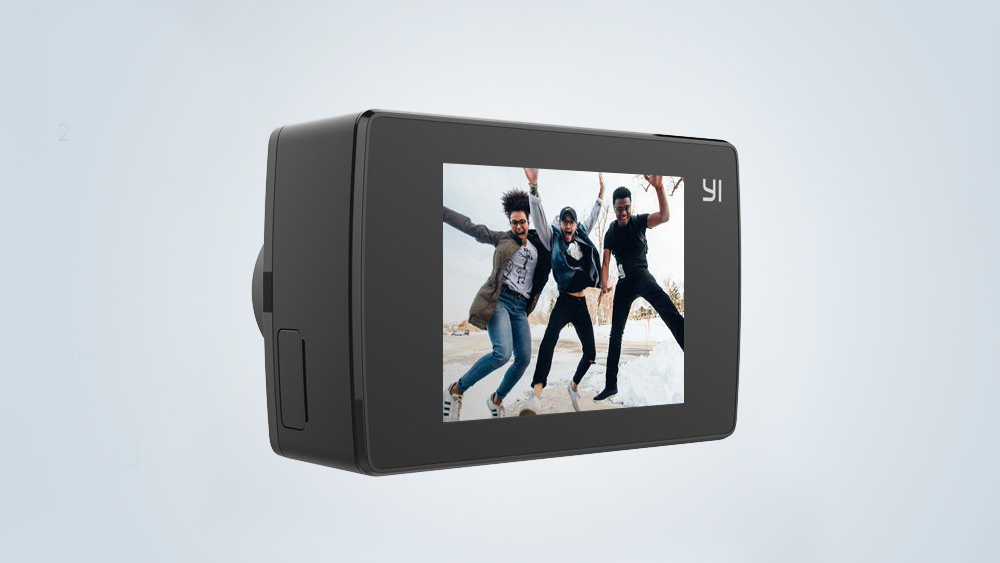
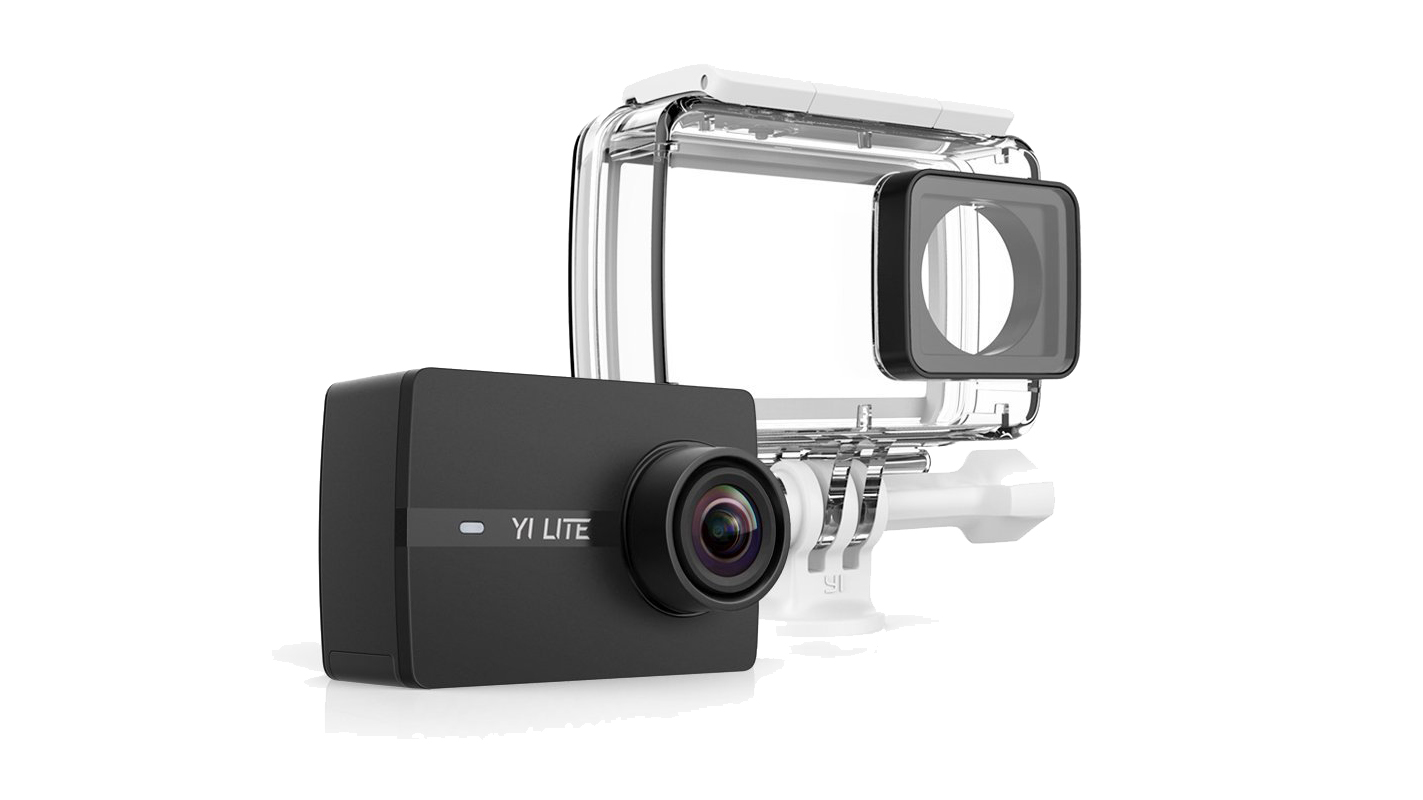
Design
- Scratch-resistant casing
- 2-inch touchscreen
- Weighs 72g
Measuring 65 x 42 x 30mm and weighing 72g, the scratch-resistant tough casing of the Yi Lite has a smaller LCD touchscreen than it's bigger brother, the Yi 4K+. It's two-inches in diameter, and although it's sibling's is 2.2-inches, the difference is at first rather stark. However, although it takes up far less room on the back of this small camera's chassis, it proved large enough to navigate without any problems.
While the side has a microUSB slot for recharging, the a removable 1200mAh lithium-ion battery lies under a flap on the undercarriage that also hides a 16GB-64GB microSD card. The Yi Lite also has a standard tripod thread, which will be a relief to videographers wanting a pocket-sized video camera for landscapes and general use (oh, and selfies sticks).
Sign up for breaking news, reviews, opinion, top tech deals, and more.
Performance
- Full HD footage delivers best results
- 4K capture too jerky
- Still images are generally good
Before we movie into image quality, the Yi Lite's user interface is worth a quick praise. Despite being restricted to a two-inch LCD screen, we found the camera's settings so easy to manipulate.
On video quality, the Yi Lite produces by far its best work when shooting in Full HD 1920 x 1080 pixels at 50fps. That won't get you the very sharpest still image resolution – the Yi Lite's 4k 20fps mode will get you that – but for any kind of scenario where the camera will be moving, anything other than Full HD 50fps has a lot of judder and blur in the finished video. This isn't at all unusual for action cameras. If you do plan to put the Yi Lite on a tripod to film the action unfold in front of it, then the 4K 20fps mode is an excellent option that grabs loads of detail. For those wanting to save space on the SD card may be tempted by the 1280x720 pixel options at 50fps and 100fps, though in our test the results were too soft considering they only saved about a third of the space.
There's also a useful 1920 x 1440 resolution mode that's produces a 4:3 video that's useful for uploading to Instagram without cropping, though it suffers from being 20fps. Whatever mode you choose, the Yi Lite produces bags of contrast and colour in bright conditions, with that Sony Exmor R sensor able to drag out a lot of detail even in murky conditions. Battery life is about two hours, regardless of resolution.
Still images – which can be taken in 16MP – are generally impressive…if you can keep the camera still. It's not a good idea to hold the Yi Lite as you would a regular camera and depress the shutter. Doing so introduces a physical movement and a nasty blur. However, its sensor works really well in low light, producing colourful and relatively noise-free images in twilight. You also have to remember to keep your subjects at least a few metres away to allow for photo to be in focus (it's a focus-free fish-eye lens, after all) – and don't expect pin-sharp detail. There's some distortion, as you would expect from a fish-eye lens, but little chromatic aberrations visible in the corners of the frame. It's limited, for sure, but for outdoorsy shots, the Yi Lite's photographs met our expectations.
Verdict
Products like the Yi Lite are hampered not by resolution, but by frame rates, and that's also the case with this everyman action camera. Nevertheless, it has exactly what most users are after; reliable Full HD and the option to experiment in 4K. It comes with caveats – Full HD at 50fps is by far the best option if you want smooth results from your adventures, while 4K 20fps is good only for still shots.
So advice is clear; do not buy the Yi Lite for its 4K ability (which, to be fair, the manufacturer deftly underplays). It's at its best with Full HD at high frame rates, and as such, it's a great value, versatile and impressively simple pocket-sized action camera that opens-up the genre far beyond the GoPro-obsessed all-the-gear-and-no-idea brigade.

Jamie is a freelance tech, travel and space journalist based in the UK. He’s been writing regularly for Techradar since it was launched in 2008 and also writes regularly for Forbes, The Telegraph, the South China Morning Post, Sky & Telescope and the Sky At Night magazine as well as other Future titles T3, Digital Camera World, All About Space and Space.com. He also edits two of his own websites, TravGear.com and WhenIsTheNextEclipse.com that reflect his obsession with travel gear and solar eclipse travel. He is the author of A Stargazing Program For Beginners (Springer, 2015),
